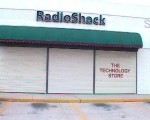RadioShack Seeks to Recover a Forgotten Customer
Post Views 9RadioShack understands the importance of humility.
It present itself candidly during the Association of National Advertisers’ Masters of Marketing conference. Lee Applbaum, the chief marketing officer, explained how the marketing abandoned the company’s core customer, the do-it-yourselfer while trying to embrace mobility. Throughout the past couple of years, it has ventured on a remarkable journey to reconcile itself. Its focus on mobility has proven successful. It reports a climb from 35% in 2009 to 47% in 2011 in mobility sales.
Applbaum summed up RadioShack’s new problem in an article from April 2010. He says, “Bravo RadioShack, we’ve done a great job in mobility, but unfortunately, that’s only part of the story. The last nails are being hammered into the coffin of the little electronics hobby shop they once loved. And the cellphone seems to be an apt symbol for the superficiality and ordinariness they feel are taking its place.”
After recognizing this, Applbaum realized how forgotten its pinnacle customer must feel. “We completely pissed them off,” Applbaum explains. “We had turned out back and were ignoring them. We had alienated the very customer that had given us that core credibility in electronics.”
True, mobility has increased greatly in RadioShack sales percentages. However, what it was once infamous for, that is, power products and accessories, suffered. Sales percentages fell from 38% of business in 2009 to 32% in 2010. Analysts and shareholders payed attention to this decline. This is an important category of sales for the company. It has incredibly high margins, encourages loyalty and drives frequency.
“As a CMO you get rewarded for change. The more things you can say are wrong and broken and fix, the better. In our haste to change, we forgot this core component,” explains Applbaum. “For the work around the rebranding, we didn’t spend ample time understanding our customers.” At first, RadioShack justified itself saying that people did not buy those core products anymore. However, as time marched on, old customers began to speak out through articles and blog posts. The company quickly realized their error.
Once it acknowledge the issue, the company quickly began establishing connections with the do-it-yourself shopper once more. Over a quarter of the company’s retail base is made up of the unappealing, married 55-year old male likely employed as an engineer. The company reached out to this crowd through social media and a blog.
After analyzing the responses, RadioShack released its campaign called “The Great Create”. This program promoted the company’s roots and attracted 110 million visitors within the first month and a half. Applbaum, very pleased with the level of response by former customers, says, “We’re delighted that these customers have welcomed us back with open arms, because it was a real possibility that they’d just give us the middle finger.”
RadioShack Seeks to Recover a Forgotten Customer by Harrison Barnes



 Looking for a Job in Advertising? Visit AdvertisingCrossing
Looking for a Job in Advertising? Visit AdvertisingCrossing  10 Tips to Improve Your Facebook Business Page
10 Tips to Improve Your Facebook Business Page  What Can AdvertisingCrossing Do For Me?
What Can AdvertisingCrossing Do For Me?  Netflix Habits Vary Around the World
Netflix Habits Vary Around the World  10 Highest Paid Advertising Tech Executives
10 Highest Paid Advertising Tech Executives